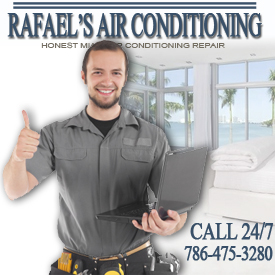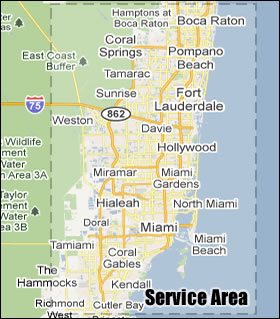As temperatures soar during the blistering summer months, a Common AC Issues can swiftly transform your home into an uncomfortable and unbearable space. Such a situation often leaves the user with no option other than hiring professional AC Repair Miami Beach services, which is usually the best option.
However, it’s also true that many common issues that trouble AC systems can be easily identified and rectified with a bit of DIY knowledge. This practical approach not only saves you from a potentially high repair bill but also empowers you to take control of your indoor comfort.
Ahead in this blog, we’ll walk you through the systematic process of troubleshooting and fixing typical AC issues, ensuring that even those without technical expertise can reclaim the cool oasis they call home.
Common AC Issues
Before embarking on the journey of fixes, it’s crucial to familiarize ourselves with the potential culprits. AC troubles often manifest as insufficient cooling, alarming noises, and mysterious odors wafting through your living space. Imagine your AC unit wheezes like a tired marathon runner, struggling to keep up with the demands or emitting an unusual scent reminiscent of burnt toast. Recognizing these signs becomes the initial crucial step in regaining control of your indoor climate.
Tools and Materials
Gathering your toolkit before commencing the AC rescue mission is a prudent step. Fortunately, you won’t need an extensive array of high-tech gadgets, as common household items such as a screwdriver, a vacuum cleaner, and a sturdy pair of gloves are often sufficient. Ensuring you have these tools readily available positions you as a proactive troubleshooter, ready to tackle any surprises your AC might throw your way.
Safety Precautions
Amid the excitement of DIY endeavors, safety must remain the top priority. Working on your AC involves navigating through electricity and interacting with moving parts, highlighting the significance of precautions. Before embarking on any troubleshooting mission, it is imperative to turn off the power supply, wear protective gear, and proceed with a cautious mindset. Integrating safety into your DIY approach not only guarantees a well-functioning AC but also safeguards your personal well-being.
Step-by-Step Troubleshooting Guide
Embarking on the troubleshooting journey necessitates a systematic and meticulous approach.
1. Warm Air Blowing:
- Begin by checking the thermostat settings. Ensure it’s set to the cool mode and at the desired temperature.
- Inspect the air filter for clogs; replace or clean it to enhance airflow and restore efficient cooling.
- If the issue persists, assess refrigerant levels, as low levels may require professional attention for a recharge.
2. Strange Noises:
- Identify the location of the noise. It could be a loose part, a malfunctioning fan, or issues with the compressor.
- Inspect the fan blades for obstructions or signs of wear. Make sure to tighten loose components or replace damaged parts.
- Examine the compressor for loose bolts or damaged components causing the disturbance.
3. Mysterious Odors:
- Investigate potential sources of odors, such as mold or mildew in the ducts or a dirty air filter.
- Clean or replace the air filter and consider professional duct cleaning if the smell lingers.
- Check for debris around the evaporator coil, cleaning it to eliminate any sources of unpleasant odors.
4. Uneven Cooling:
- Evaluate the distribution of cool air in different rooms, as uneven cooling may indicate ductwork issues.
- Inspect ducts for leaks or blockages, as sealing or insulating ducts can improve overall cooling efficiency.
- Ensure vents are open and unobstructed to promote balanced airflow throughout the space.
By following these steps, you’ll unravel the mysteries behind your AC issues and be well on your way to restoring optimal functionality.
DIY Fixes for Common AC Issues
Now that we’ve successfully identified the adversaries, it’s time to roll up your sleeves and initiate the fixes.
1. Clogged Air Filter:
- Power off the unit and locate the air filter. Typically found in the return air duct or near the furnace.
- If disposable, replace the filter, and if reusable, clean it thoroughly. This simple step enhances airflow and cooling efficiency.
- Consider upgrading to a high-efficiency filter for improved air quality and system performance.
2. Bent or Blocked Fins:
- Turn off the power and locate the condenser unit. Inspect the fins for any bending or debris.
- Use a fin comb or gentle pressure to straighten bent fins. Clear debris with a soft brush or vacuum for optimal heat exchange.
- Trim any vegetation or debris around the condenser unit to maintain proper airflow.
3. Refrigerant Issues:
- Low refrigerant levels can hinder cooling. Consult your AC manual to locate the refrigerant lines.
- If levels are low, consult AC Repair Miami Beach professionals for a recharge to restore optimal cooling performance.
- Consider scheduling regular professional maintenance to identify and address refrigerant issues before they escalate.
4. Noisy Fan or Compressor:
- Power off the unit and inspect the fan and compressor for loose or damaged parts.
- Tighten loose components or replace damaged parts to eliminate noise disturbances.
- Lubricate moving parts like the fan motor to reduce friction and minimize operational noise.
5. Musty Odors:
- Locate and clean or replace the air filter to eliminate mold or mildew causing unpleasant smells.
- Consider using an HVAC-friendly disinfectant to address lingering odors in the ducts.
- Schedule periodic professional duct cleaning to maintain optimal indoor air quality.
6. Uneven Cooling:
- Evaluate the distribution of cool air in different rooms, as uneven cooling may indicate issues with the ductwork.
- Inspect ducts for leaks or blockages, as sealing or insulating ducts can improve overall cooling efficiency.
- Ensure vents are open and unobstructed to promote balanced airflow throughout the space.
Armed with these comprehensive DIY fixes, you’ll confidently address common AC issues, ensuring a cool and comfortable living space throughout the seasons.
When to Seek Professional Help
While the allure of DIY solutions is undeniable, professional intervention becomes imperative in some situations. Refrigerant leaks, malfunctioning compressors, and other complex issues may be beyond the scope of a DIY enthusiast. Recognizing when to wave the white flag and summon the expertise of AC Repair Miami Beach specialists ensures your AC receives the necessary care without potentially exacerbating the problem through well-intentioned but inexperienced attempts.
Final Words
In conclusion, you’ve successfully navigated the intricate landscape of DIY AC troubleshooting. Armed with newfound knowledge, you can confidently tackle common AC issues and maintain a cool sanctuary all summer. However, if you ever require professional help for any sort of air conditioning issues, feel free to reach out to the skilled technicians of AC Repair Miami Beach. Share your success stories, or feel free to pose any lingering questions in the comments, as we’re here to assist you on your journey to becoming the ultimate AC whisperer.


